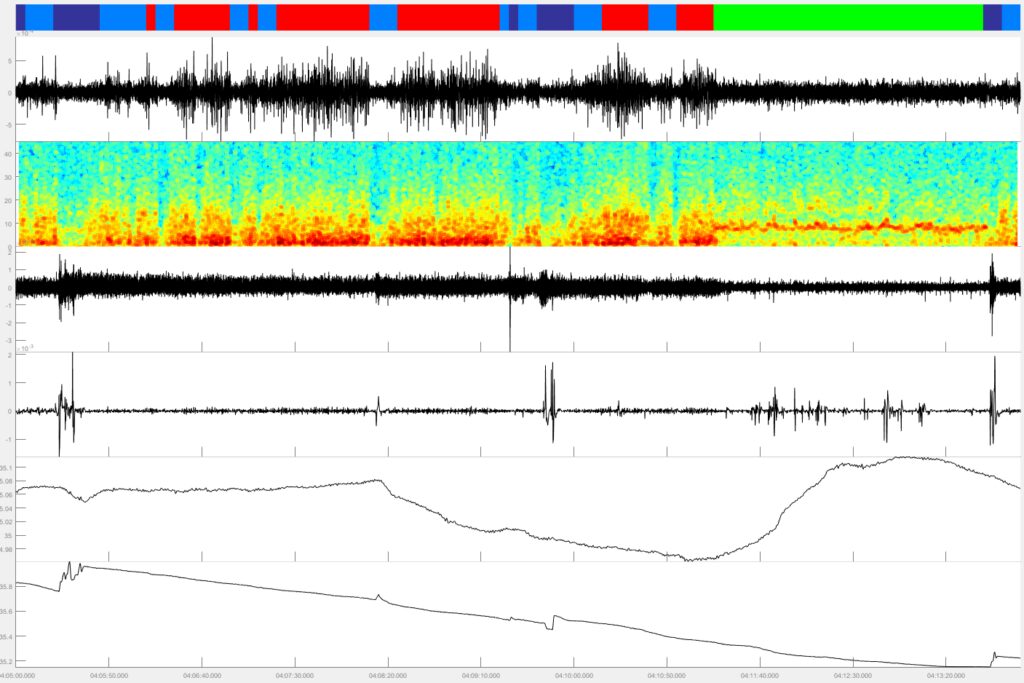In our lab we are constantly developing tools (software and hardware) to assess sleep, its function, its nature, and its plasticity across species in both laboratory and wild settings. We have a set of scripts, programs, and toolboxes written with matlab and python allowing us to record and analyse our data: sleep quantification, spectral analysis, whisker tracking, muscle tone quantification … We also have built custom telemetric and logging devices to record behavior, electroencephalographic signals, and the physiology of animals. We present some examples below.
In collaboration with the Nanotechnologies Institute of Lyon (PALSE IDEX 2013-2015) we designed ONEIROS, a miniature wireless device dedicated to sleep research (Massot et al, J Neurosci Meth, 2018). This device is capable of recording up to 26 electrophysiological channels (EEG, brain local field potentials, muscle tone, eye movements, heart rate), in combination with body and brain temperatures, head position and acceleration, and ambient temperature. The device is also capable of evaluating the arousal threshold and can be used to sleep deprive the animals. A smaller version (only 4 g including the battery) has recently been developed. We can record up to 5 days continuously eight electrophysiological channels, three temperatures, and the accelerometry.
We are currently developing this technology to record in the wild. We have built a sleep logger capable of recording flying and swimming animals. The logger is 1.2 g without the battery, can record 14 channels at frequencies of up to 256Hz. Thermistors or photoresistors can be used to record light and temperatures. We have developed the only device to simultaneously record the physiological, behavioral, and environmental changes associated with sleep in the wild. A scheduler is also available to delay the recording or to schedule multiple recording sessions.




